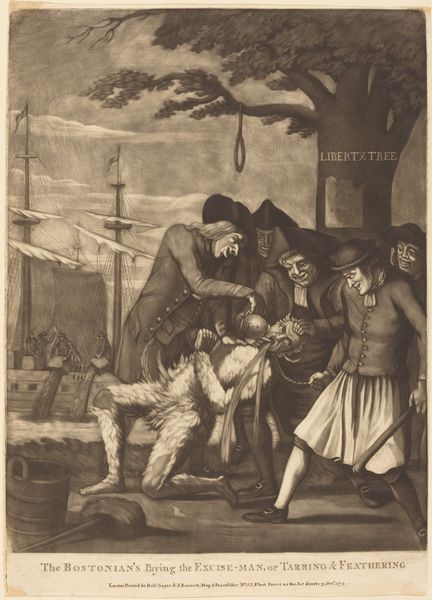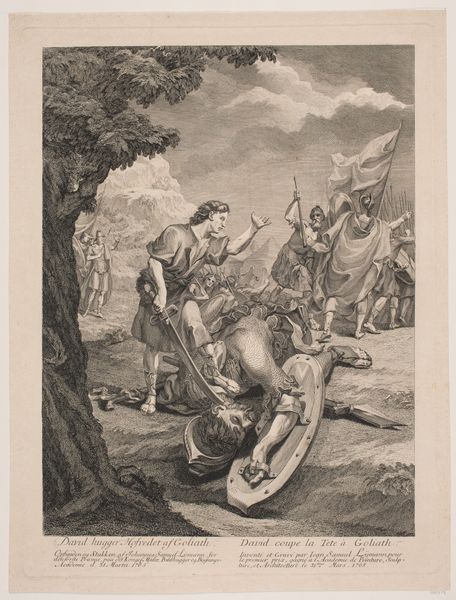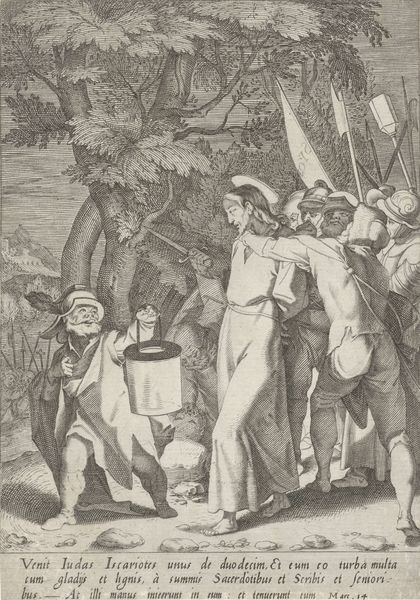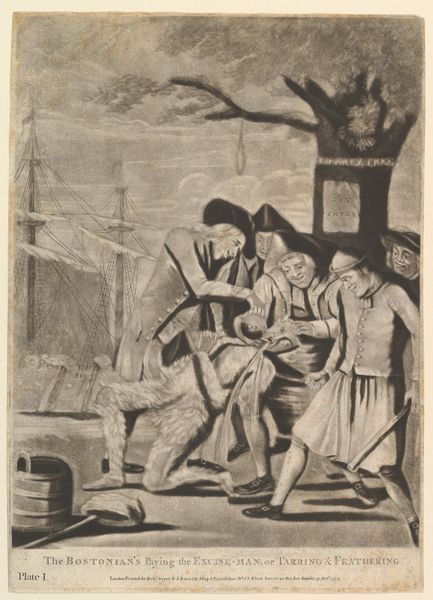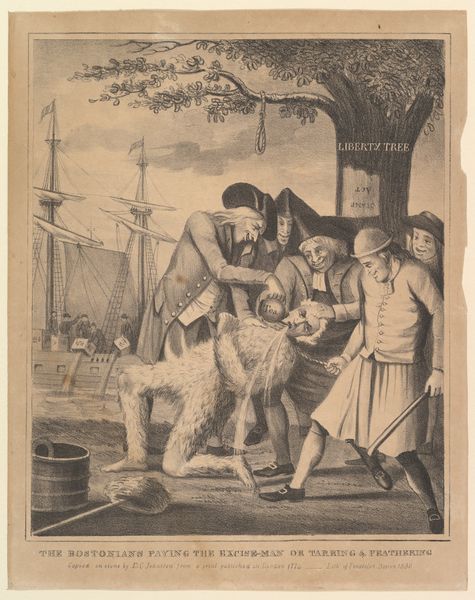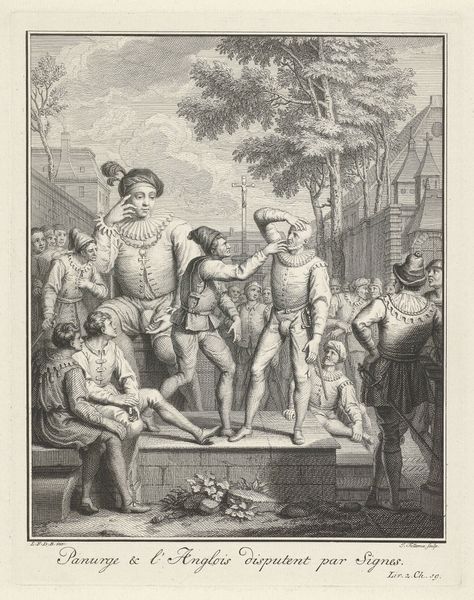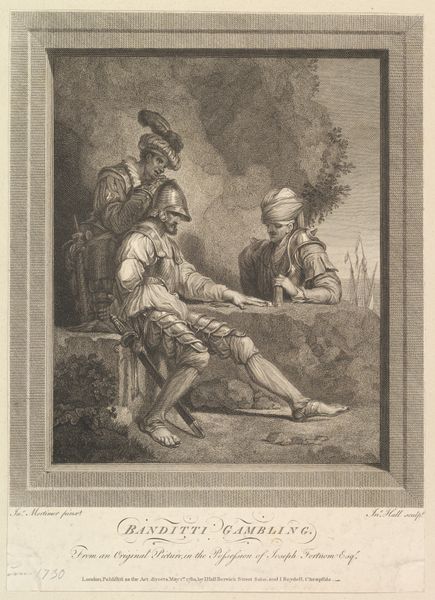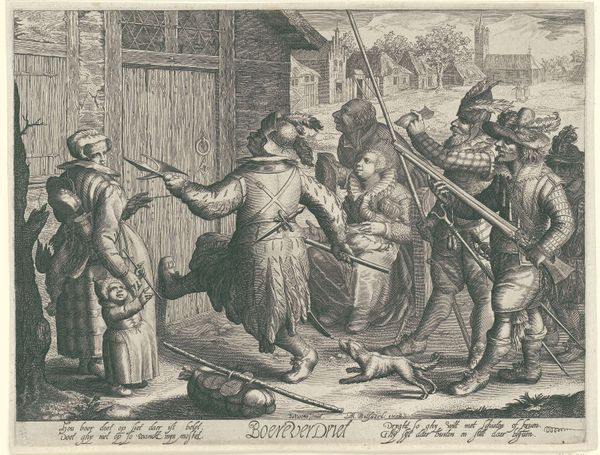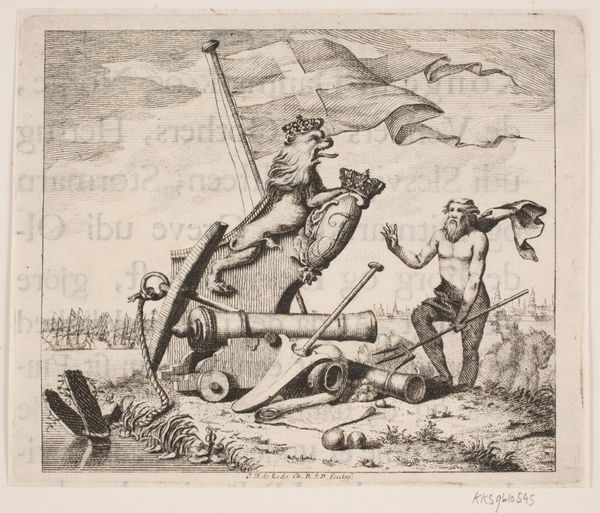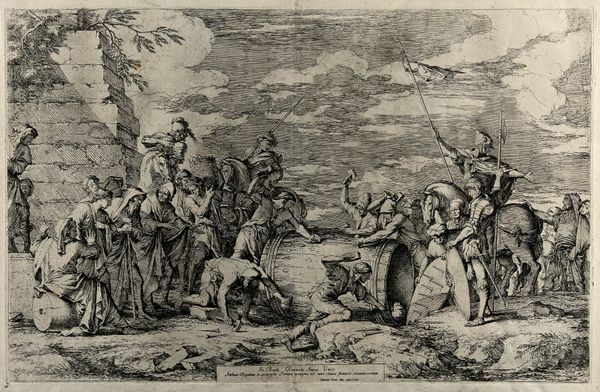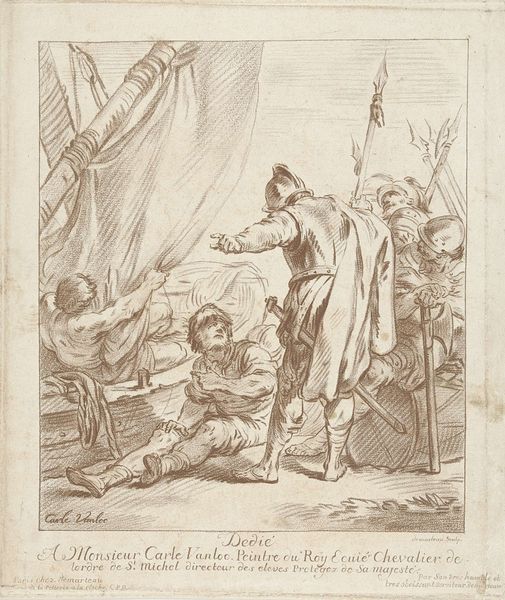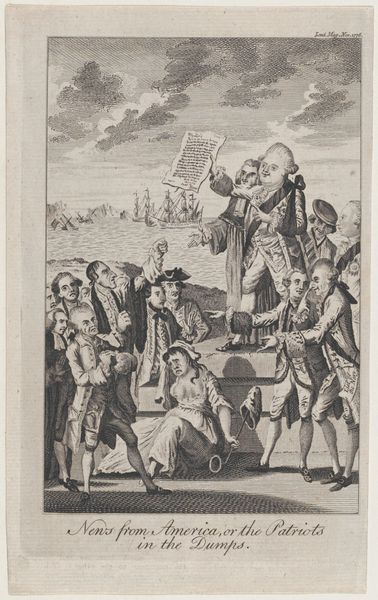
The Bostonians Paying the Excise-Man, or Tarring & Feathering 1774
0:00
0:00
drawing, print, engraving
#
drawing
#
narrative-art
# print
#
caricature
#
men
#
history-painting
#
engraving
Dimensions: sheet: 14 x 10 1/8 in. (35.6 x 25.7 cm) plate: 15 9/16 x 10 15/16 in. (39.5 x 27.8 cm)
Copyright: Public Domain
Curator: Here we have "The Bostonians Paying the Excise-Man, or Tarring & Feathering," an engraving made around 1774 by Philip Dawe, now held at the Metropolitan Museum of Art. What’s your initial reaction? Editor: It's stark. There's a disturbing intensity radiating from the print—the dark and light contrast emphasizes the brutal act of tarring and feathering, but also makes the victims almost monster like... the material effects look messy. Curator: Indeed. Dawe situates this event within the volatile socio-political landscape of pre-Revolutionary Boston. Note how it critically represents the tensions between the colonists and the British Crown. The central figure, presumably a customs official, is being punished for enforcing unpopular tax laws. Editor: So the tar and feathers aren't just an act of violence, but a highly symbolic one. We see how colonial resistance mobilizes readily available materials into a form of political statement—but at what cost, literally? Curator: The print does highlight the intersection of class, power, and resistance, and reveals how the colonists deployed a form of corporeal punishment historically associated with marginalized groups against figures of authority. The question arises, does this constitute resistance or simply a brutal displacement of power? Note also "Liberty Tree," turned gallows of sorts, revealing the extent to which freedom can shift and morph and, also, that ships in the harbor are ready for export, laden no doubt with valuable goods at stake. Editor: The details like the Liberty Tree warped into gallows really drive home how dissent turns quickly to barbarism. The engraver's process seems almost complicit; mass producing this scene further commodifies violence and hatred through printed image, turning suffering into consumable spectacle. Curator: It is important to remember that in looking at historical records that what passes as ‘spectacle’ might not actually be spectacle for all viewers. Instead we must ask what populations is this ‘spectacle’ designed to impact? And towards what political means? Editor: Reflecting on the materials and their social deployment really exposes the uncomfortable entanglement of revolution, class warfare, and performative brutality—or terror! It complicates any simplistic narrative of colonial righteousness. Curator: Exactly. And understanding the piece within its historical and social milieu allows us to grapple with its complexities and troubling implications for both the eighteenth century and beyond.
Comments
No comments
Be the first to comment and join the conversation on the ultimate creative platform.
